
2018 Maruti Suzuki Swift Engine Options, Variants and Colours Revealed
- Jan 18, 2018
- Views : 30420

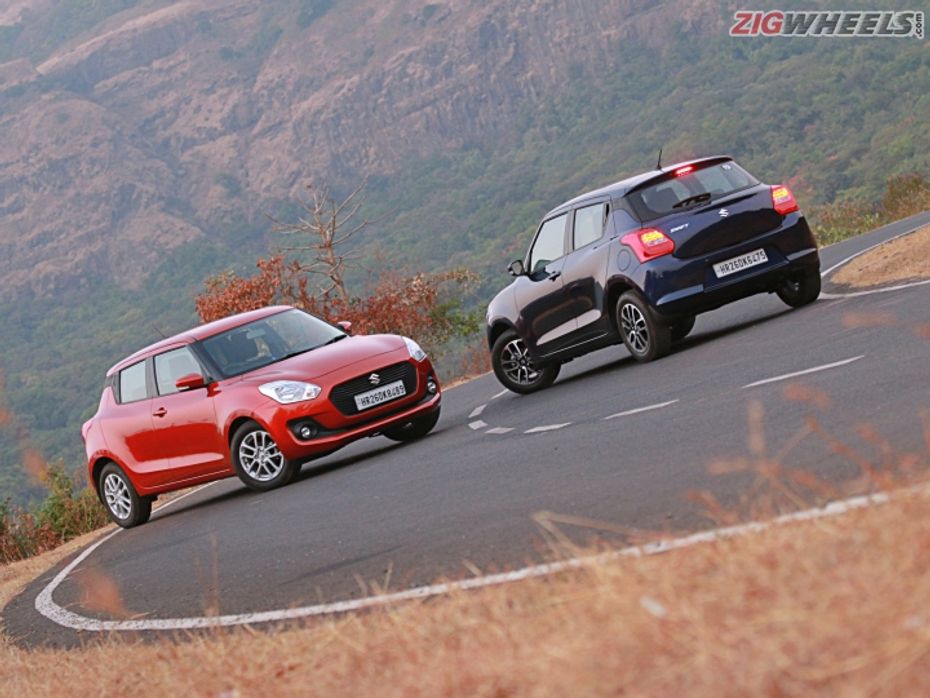
The Maruti Suzuki Swift needs ZERO introduction. Back when it was introduced in 2005, it totally changed the way we Indians perceived hatchbacks. It combined premiumness, a fun driving experience and practicality in a way that wasn’t done before. And it's been a hot ticket ever since, staying on the list of the top 5 highest selling cars in the country for well over a decade now. So when the third generation of the car is about to drop, it’s clearly a big deal. But has Maruti fiddled with the formula that made the Swift such a success?
New, but familiar

Clearly, this is a new Swift. Every design detail and shape has been changed. Still, it manages to retain a silhouette that is unmistakable for anything but a Swift. The front end is fairly familiar, as we’ve seen it before on the new Dzire. However, the Swift’s bumper and grille design are a bit different, and it’s missing the chrome elements from its sedan counterpart. And that makes the front of this new hatchback look a bit mundane. The LED headlights with LED DRLs do look great, but unfortunately, they’re only available on the Z+ variant. And the conventional headlights… well, they’re a bit too plain. The familiar Swift elements such as the flared wheel arches are there, but they now feel a bit better integrated into the car’s rounded shape. It does look pretty good from its side profile though, with its blacked out A and B pillars, and semi-blacked out C pillar. That gives it even more of a floating roof effect than before, and the body-coloured part of the C-pillar does have a lovely fin shape to it.
Also Read: Know everything about the variants, features and specifications of the new Maruti Suzuki Swift
The top-spec Z+ variant also gets the 15” precision-cut alloy wheels, which if we’re being honest, look a bit chintzy. We really do prefer the more conventional look of the 15” alloys from the Z variant. The look at the back is most distinctive though, and that’s where it deviates the most from the Swift of old. The squared tail lights with their C-shaped LED strips look great and have a Mini-esque quality to them. Overall though, this new Swift doesn’t stand out amongst the crowd as much as the original one did - there’s little “wow” factor here. But the overall design is inoffensive and should have a fairly broad appeal.
Step into my parlour

The design philosophy of inoffensiveness makes a clear appearance in the interiors as well. No two-tone business here… it’s an all-business, all-black look. And we kinda like it. There are nice silver accents across the cabin, such as around the air-con vents and controls, around the instrument pods, on the steering and a bit along the dashboard. Speaking of the steering, this Swift gets a flat-bottomed unit, and that really adds a wonderful sporty touch. Adding to the sportiness is the centre console that’s tilted towards the driver by 5 degrees. You really do get the feeling that this is a driver-focused car.
The new air-conditioning controls have been revised too, and now feature a three-pod layout which looks pretty neat, but it’s just the Z and Z+ variants that get automatic climate control. And, it’s only the Z+ variant that gets the touchscreen infotainment with Android Auto, Apple CarPlay and MirrorLink. All other variants have to make do with a fairly basic audio system with Bluetooth, aux and USB connectivity.
All grown up
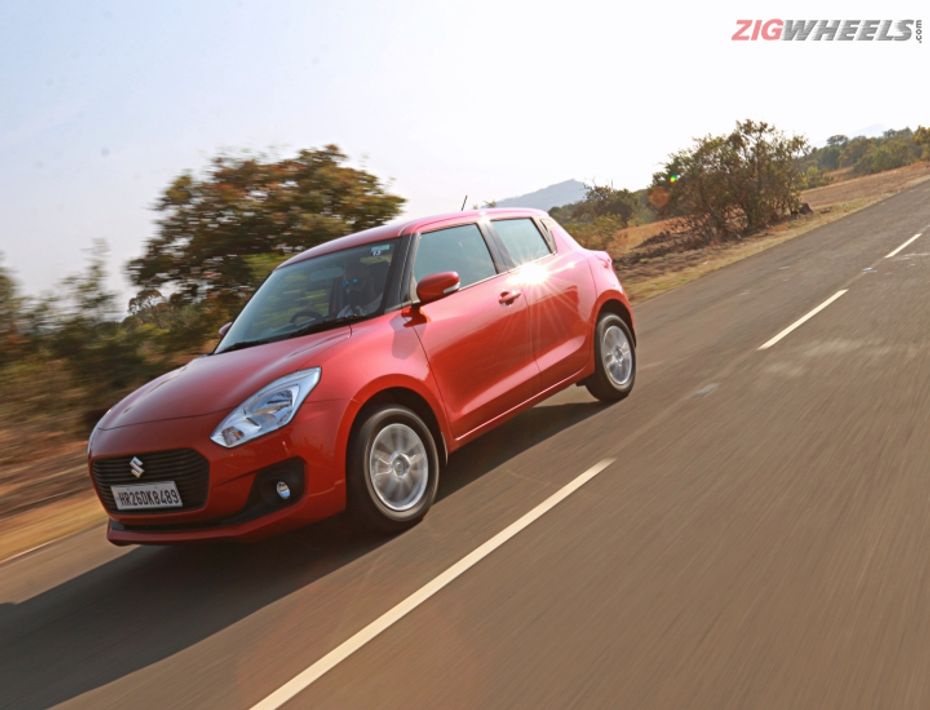
No matter what angle you look at it from, this new Swift looks larger than its predecessor. Honestly, that’s because it is… for the most part. At 1735mm, it’s now 40mm wider than before, and even the wheelbase is now 2450mm - a whole 20mm longer. Surprisingly though, the overall length has gone down by 10mm. That doesn’t mean it has affected interior space in a negative manner though. A larger cabin and redesigned seats have not only allowed for more spacious seating in the front but one of the earlier Swift’s biggest woes - back seat knee room - has been thoroughly addressed as well. And while space at the back doesn’t feel at par with the likes of the Hyundai i20 or the Maruti Suzuki Baleno, both of which are billed as large hatchbacks, this new Swift can seat two adults at the back in absolute comfort. It is possible to get three people on the rear bench, thanks to an 8mm increase in rear shoulder room, but that will still have to be limited to shorter stints.
It’s not just that the cabin is more spacious, it even feels so. A larger window area at both the front and back really works wonders for the feeling of airiness in the car. At the front, the more vertically raked windscreen and the lower set dashboard provide great visibility. And that vertical A-pillar also makes for a much larger front door aperture, so getting in and out of the front seats is a much easier task than before (not that it was a problem on the outgoing Swift).
The other upshot of the redesigned cabin is improved boot space. At 268 litres, it’s nowhere close to that of the larger hatchbacks, but it’s still more than its direct segment rival, the Hyundai Grand i10, and represents a 64-litre improvement over its predecessor. That said, the loading lip is still high, requiring you to lift your luggage up a bit before placing it in the boot. And speaking of the boot, the spare wheel located under the floor is a 14-inch steel rim with 165/80 rubber, even on the top two trims which are equipped with 15-inch alloy wheels.
While occupants and their luggage will have a fine time in the car, their knick-knacks might not. Under the centre dash, there’s a cubby for mobile phones and other things, with two average-sized cup holders following it. But the cubby under the handbrake lever might prove to be a bit too small for larger mobile phones or phablets. Even the front door pockets can just about handle a 1-litre water bottle along with a few other narrow items. And on the rear doors, while we’re glad that there at least are bottle holders (the previous Swifts didn’t have any storage), they can only hold a half-litre bottle at best.
Comfort and convenience

Apart from increasing interior space, this Swift also comes with much-improved seats. The front two seats now have a larger base and are better contoured, making them a lot more comfortable than before. And they also feature plenty of side bolstering that does a great job of cocooning the front occupants in the seats, which proves to be extremely useful when throwing the car around corners. If we had to nitpick, we would’ve appreciated a little more under-thigh support, especially since the larger cabin would’ve allowed for slightly larger seats as well. But as they stand, we have no real complaints regarding the front seats. The steering wheel is only adjustable for tilt, not for reach, and while this might seem like a sore point for some, none of our staffers (of various heights) who drove the car faced an issue finding the perfect driving position.
At the rear, the seat base is a bit larger as well now, and the seat back has been canted backwards by 2 degrees. This makes the overall backseat experience in this new Swift a lot more comfortable as well. However, one aspect we think the rear cabin experience missed out on is A/C vents at the back - there are none!
Maruti says that they’ve worked on improving the Swift’s noise insulation and it really shows. At highway speeds, there’s very little engine and wind noise that penetrates the cabin, and even tyre noise is kept to acceptable levels. The improved cabin insulation is especially apparent in the diesel, where the motor’s typical clatter is barely perceptible in the cabin when running at reasonable speeds. And speaking of motors...
Familiar hearts
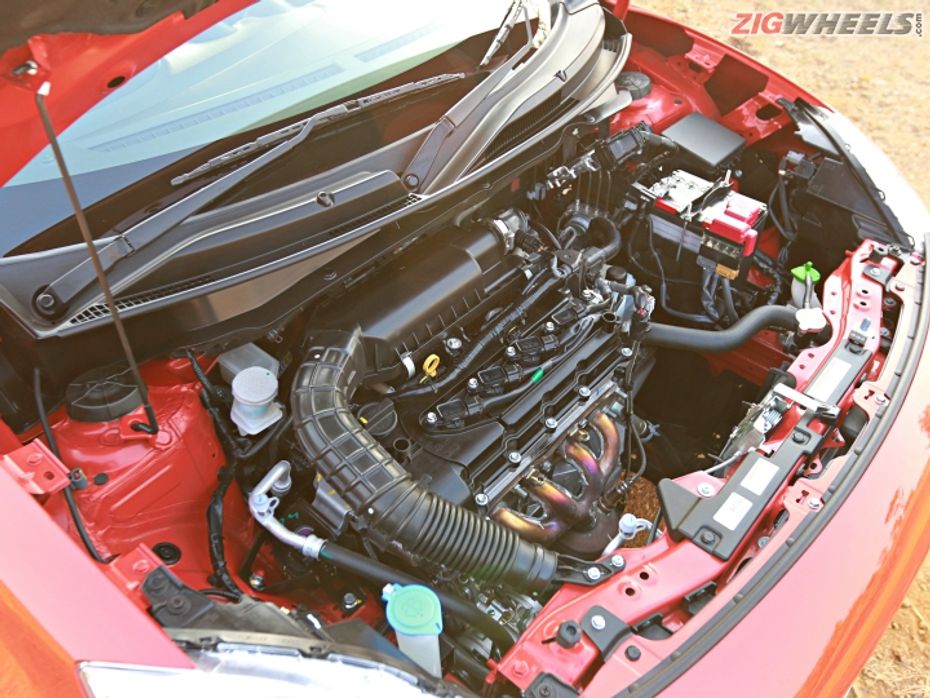
Powering this new Swift is Maruti’s tried-and-tested pair of four-cylinder petrol and diesel motors. These haven’t seen any change in terms of their output, with the 1.2-litre VVT petrol still producing 83PS @ 6000rpm and 113Nm @ 4200rpm. The 1.3-litre DDiS 190 diesel too makes the same 75PS @ 4000rpm and 190Nm @ 2000rpm. This might put off some who would’ve liked to see more powerful motors in this new car, but it actually feels peppier now. This increased performance is thanks to weight savings of up to 80kg over the previous car, giving these new Swifts a much better power-to-weight ratio. Maruti claims that the petrol is now about 10 per cent quicker to get from zero to 100kmph, while the diesel is about 8 per cent quicker, although we’re yet to verify these claims.
Both engines maintain their familiar behavioural traits, and we aren’t complaining. The petrol remains highly tractable, but low on poke at lower speeds. Get it revving beyond 3500rpm though, and this engine really wakes up with a raspy exhaust note that borders on sporty. If you’re in the mood for a bit of fast driving though, you kinda need to work the gearbox to keep this engine on the boil. But when you do, it’s an absolute hoot. To top it off, it’s supremely refined, and with such low NVH levels that when the car is idling, you often wonder if it’s even running.
The diesel is highly tractable too, and as before, a little slow on the uptake below 1800rpm. Once the turbo spools up, though, the diesel Swift swiftly picks up speed with that now-familiar surge of torque coming in and pulling you along. This DDiS unit retains its smoothness and refinement (for a diesel), but once you really get the motor revving, it becomes quite audible. And it’s not got a particular enjoyable note. Still, the diesel motor has plenty of grunt and we imagine it’s going to be the pick of the lot for a lot of buyers.
Honestly, we’re glad that Maruti has stuck to these motors. They’re not what you might call exciting, but they offer the best of a fun driving experience mixed with a healthy dose of sensibility. And they’re known to be quite efficient too, with claimed fuel economy figures of 22kmpl for the petrol and 28.4kmpl for the diesel.
Both the petrol and diesel models come with a 5-speed manual gearbox as standard. This ‘box feels pretty similar to the one from the current Swift, offering a short throw and a fairly slick shifting action. However, we’ve been told that the fifth gear has been made a bit taller for a slightly higher top speed, all made possible thanks to the car’s improved power-to-weight ratio.
Auto, mate!
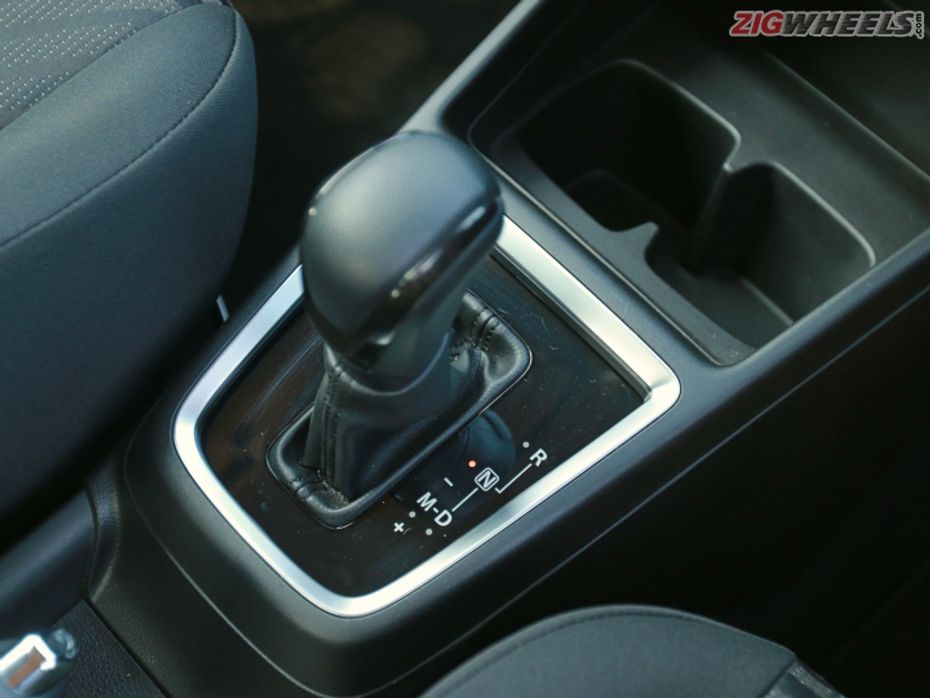
One big difference in the drivetrain now is that Maruti is offering both the petrol and diesel versions of the new Swift with an AMT gearbox, similar to the ones we’ve already experienced on the Ignis and Dzire. That said, it is tuned differently compared to those two. Where the Ignis’ auto ‘box feels quite aggressive and the Dzire’s feels very laidback, the one in this Swift strikes a great balance between sportiness and smoothness. Shifts are almost seamless when you’re driving along at an easy pace. This is all the more apparent in the petrol, where the refinement of the motor and the smoothness of the gear changes complement each other really well. You can feel the shifts, but only just a little, in the diesel though.
Can the throttle, and you can really feel this AMT gearbox hard at work. At high revs, the delay in the shifts can really be felt, leading to a bit of head nod. Again, this isn’t too apparent in the petrol motor but felt quite distinctly in the diesel. That said, this gearbox’s logic is quite solid. Under most driving conditions, with the gear selector in D, you’ll rarely feel that the transmission is selecting a wrong gear, or isn’t shifting up or down when it’s supposed to. But we did notice a minor niggle in the diesel AMT. When you almost come to a stop in traffic and start moving again, the gearbox tends to hold first gear till you cross 2000rpm. This makes the engine feel stressed for no reason, especially when it has the bottom end torque to carry off those speeds in second gear.
A lot of folks shun automatic gearboxes for sporty or aggressive driving. But slot this AMT into Manual mode, and you can have a lot of fun with it. In this mode, the gearbox will only automatically shift down if you drive at a speed slow enough to either heavily lug or stall the engine. But more importantly, it won’t shift up automatically even if you rev the engine (both petrol and diesel) till the limiter and keep it there. It absolutely relies on your command to shift up. And you can command the gearbox by pulling the gear selector backwards for upshifts and pushing it forwards for downshifts when slotted in M.
Even in M mode, shifts aren’t lightning quick by any means. But they let you assert good control over the car when you want to have a bit of fun. The only real issue with the AMT is that it’s available just on the V and Z variants, not the Z+ variant. So you need to choose between having all the bells and whistles or having an automatic gearbox.
Fun factor
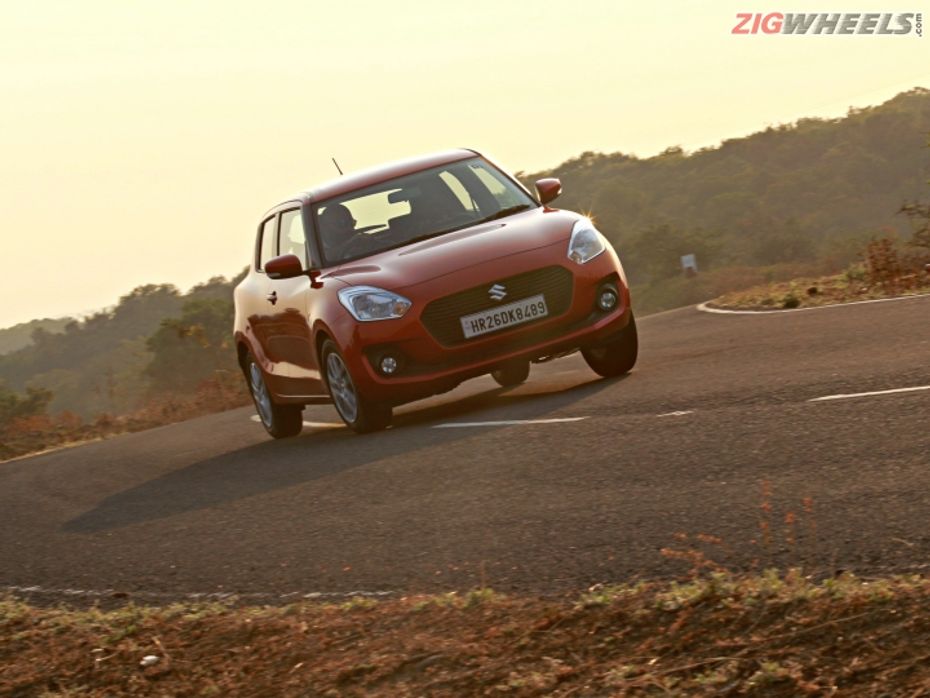
The original Swift quickly became a hit amongst enthusiasts thanks to its brilliant handling abilities. Its chuckable nature made it a lot of fun to throw around corners, and it was reasonably planted through the turns as well. Sadly, these nippy handling characteristics of the car were watered down in the second generation model, in a bid to make it more “family friendly”. But we’re really glad to say that this new Swift brings back the original’s handling prowess, and then some.
The new Heartec chassis and revised suspension all around have made the Swift a much more able handler than it ever was. You can just throw it into a corner and the car responds with gusto. Turn the steering and the nose rapidly points exactly where you wanted it to. But the bigger surprise here is that no matter how fast you enter a corner, there is absolutely no sign of understeer - the Swift just holds its line. There is no sign of wallowing through the bends either, thanks to the new suspension setup. And even the Bridgestone Ecopia tyres (185/65 R15 on the Z and Z+ variants) do a great job of providing plenty of grip. They do tend to make a bit of squealing noise when you go really hard on the brakes though, but that’s the only real drama they throw your way.
Even on the brakes, the chassis maintains its composure really well, giving you the confidence to drive harder and faster. In our short drive up and down the winding roads at Aamby Valley, the only limiting factor of how fast this Swift could corner was our own ability… and courage.
The only slight concern here was the lack of feedback from the steering. It’s a real struggle to figure out what the front wheels are doing - something that has been the scene with the second generation Swift as well. This vague front feel was alleviated a little on the diesel variant, thanks to a bit more weight on the front end. With this Swift, you have to learn to trust the chassis too, but when you do, it really pays off.
Also Read: Our first look at the sportier Swift Sport
Hard-core
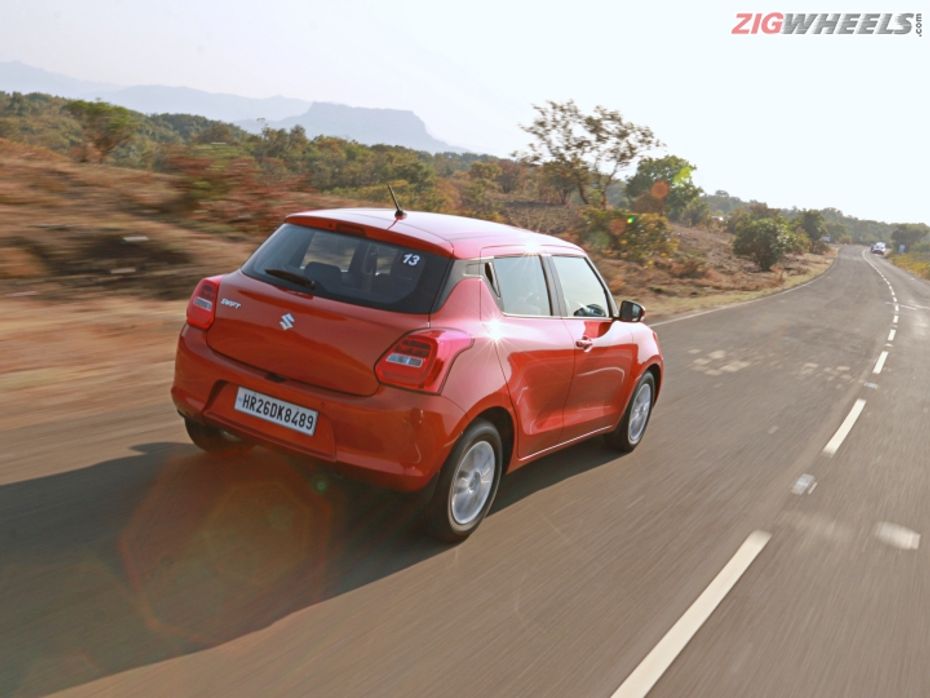
But the Swift’s great handling ability has come at a cost, and that is ride quality. The suspension setup feels much firmer than before, and this might not sit well with those looking for a comfortable family hatchback. In that sense, the ride quality almost feels “European” in its nature. You can feel almost every surface imperfection and undulation on the road through the seat of your pants, and as a rumbling in the cabin. Thankfully though, it takes really sharp bumps for the suspension to hit its stops and translate into a ‘thud’ in the cabin. Most types of broken surfaces, as long as you take them at reasonable speeds, don’t feel backbreaking and the Swift is able to maintain its composure really well.
Formula Swift
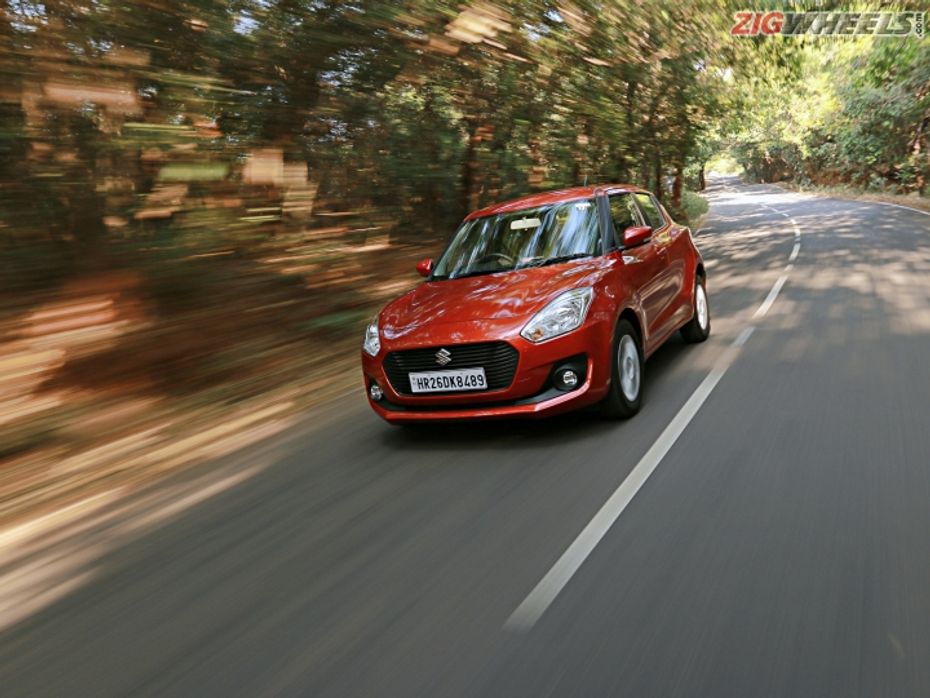
So is this new Swift a car that we’d recommend to everyone? Maybe not. The Swift has grown up in many ways, making it a more practical car than before, thanks to improved equipment, space and features. Of course, we expect it to demand a slight premium over the current car thanks to all of this.
However, it’s clear that the intention here has been to take the car back to its sportier roots. The stiff ride quality itself would be enough to put off those looking for a sedate family hatchback. However, its appeal to enthusiasts is undeniable. It’s one of the most fun to drive hatches you can get today, just like how the original one was. In that sense, the Swift is back baby!
Also Read: Maruti dealerships begin accepting bookings for the new Swift
Photography: Eshan Shetty/ Vikrant Date

2018 Maruti Suzuki Swift Engine Options, Variants and Colours Revealed

Maruti Suzuki Announces Price Hike Across Lineup

Suzuki Swift Sport | First Look

2022 Renault Kiger: Subtle Yet Sensible Changes

Tata Tiago iCNG AMT: Balancing Convenience and Cost
 Maruti S-Presso
Maruti S-Presso
 Maruti Ignis
Maruti Ignis
 Renault Kiger
Renault Kiger
 Tata Tiago
Tata Tiago
India's largest automotive community
 MG Cyberster India Launch In March, Will Be The Most Affordable 2-door Sportscar In India Due To THIS Reason
MG Cyberster India Launch In March, Will Be The Most Affordable 2-door Sportscar In India Due To THIS Reason
 Maruti Suzuki e Vitara: Features Each Of Its Three Variants Could Get
Maruti Suzuki e Vitara: Features Each Of Its Three Variants Could Get
 Maruti Suzuki Jimny 5-door: India-spec And Japan-spec Model Differences Explained
Maruti Suzuki Jimny 5-door: India-spec And Japan-spec Model Differences Explained
 All Cars Launched In January, Check Out The List For Some Exciting SUVs And More!
All Cars Launched In January, Check Out The List For Some Exciting SUVs And More!
 Maruti Dzire
Rs. 6.79 Lakh
Maruti Dzire
Rs. 6.79 Lakh
 Maruti Swift
Rs. 6.49 Lakh
Maruti Swift
Rs. 6.49 Lakh
 Maruti Ertiga
Rs. 8.69 Lakh
Maruti Ertiga
Rs. 8.69 Lakh
 Maruti FRONX
Rs. 7.51 Lakh
Maruti FRONX
Rs. 7.51 Lakh
 Maruti Brezza
Rs. 8.34 Lakh
Maruti Brezza
Rs. 8.34 Lakh
 Maruti Swift
Rs. 6.49 Lakh
Maruti Swift
Rs. 6.49 Lakh
 Maruti Baleno
Rs. 6.66 Lakh
Maruti Baleno
Rs. 6.66 Lakh
 Maruti Wagon R
Rs. 5.54 Lakh
Maruti Wagon R
Rs. 5.54 Lakh
 Tata Tiago
Rs. 4.99 Lakh
Tata Tiago
Rs. 4.99 Lakh
 Maruti Alto K10
Rs. 3.99 Lakh
Maruti Alto K10
Rs. 3.99 Lakh